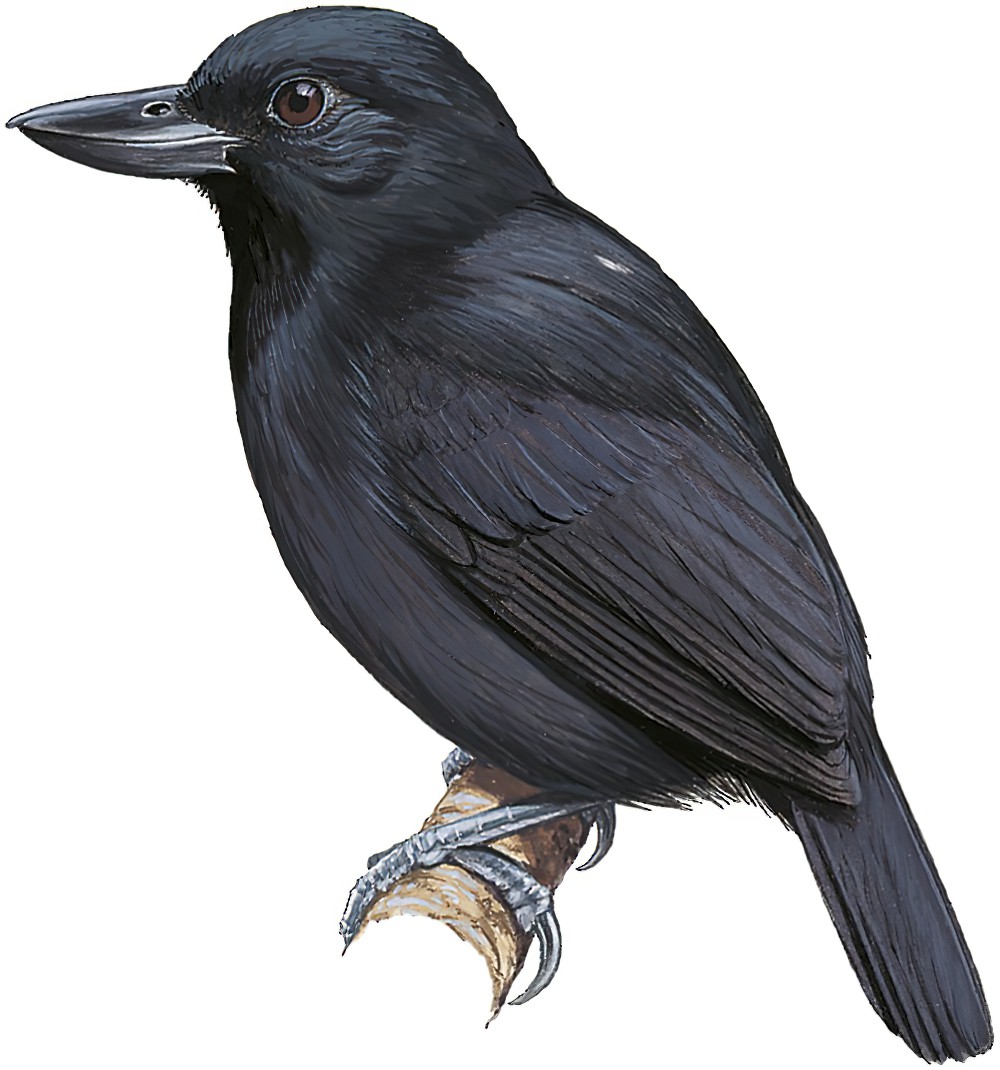Rondonia Bushbird / Clytoctantes atrogularis

Rondonia Bushbird
SCI Name:
Protonym: Clytoctantes atrogularis WilsonBull. 102(1990) p.571-580,front.
Taxonomy: Passeriformes / Thamnophilidae / Clytoctantes
Taxonomy Code: ronbus1
Type Locality:
Author: Lanyon, Stotz & Willard
Publish Year: 1991
IUCN Status: Vulnerable
DEFINITIONS
CLYTOCTANTES
(Thamnophilidae; Ϯ Recurve-billed Bushbird C. alixii) Gr. κλυτος klutos renowned, noble < κλεω kleō to celebrate; κταντης ktantēs murderer (i.e. shrike) < κτεινω kteinō to murder (cf. genus Neoctantes P. Sclater, 1869, bushbird); "CLYTOCTANTES ALIXII, sp. et gen. nov. (Plate XX.) Clytoctantes genus novum Thamnophilinarum; rostrum magnum, compressum, subrecurvatum; culmen rectum, apex non incurvus; gonys recurvus, fortiter ascendens; remiges quartus, quintus, sextus et septimus fere æquales et longissimi; pedes graciles, ungues longiores quam in genere Neoctantes. ... This extraordinary form of Formicariidae is apparently an exaggeration of Mr. Sclater's genus Neoctantes, to which it seems to be nearly allied. In many respects resembling the members of the genus Thamnophilus, it yet differs greatly from them in the form of the bill, and shape and size of the feet and claws. In appearance it resembles Neoctantes niger, but is more of a plumbeous colour than that species; and the bill is larger, straighter upon the culmen, and the under mandible more decidedly and abruptly curved upward. The feet are larger, and the claws much longer and more curved. I have named the species after Dr. Alix, of Paris, well known for various scientific publications." (Elliot 1870); "Clytoctantes Elliot, Proc. Zool. Soc. London, 1870, p. 242, pl. 20. Type, by monotypy, Clytoctantes alixii Elliot." (Peters, 1951, VII, p. 180).
atrogularis
L. ater black; Mod. L. gularis throated < L. gula throat.
● ex “Coliou Rayé à Gorge Noire” of Levaillant 1808, pl. 259 (syn. Colius striatus nigricollis).
● ex “Vanneau armé de Goa” of d’Aubenton 1765-1781, and Parra goensis J. Gmelin, 1789 (syn. Vanellus indicus).
UPPERCASE: current genus
Uppercase first letter: generic synonym
● and ● See: generic homonyms
lowercase: species and subspecies
●: early names, variants, mispellings
‡: extinct
†: type species
Gr.: ancient Greek
L.: Latin
<: derived from
syn: synonym of
/: separates historical and modern geographic names
ex: based on
TL: type locality
OD: original diagnosis (genus) or original description (species)












